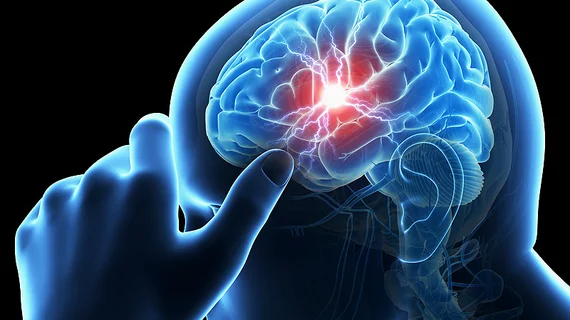AI helps bust stroke, identify occlusions
Applied to head CT images, AI software can help speed diagnosis of ischemic stroke while also localizing large vessel occlusions when the latter are a culprit, according to a systematic review of studies published over a five-year period ending in February.
The review article was published online Oct. 8 in the Journal of NeuroInterventional Surgery.
Searching PubMed and two other literature databases, Nick Murray, MD, of Stanford and colleagues at Johns Hopkins found 20 studies that incorporated various iterations of machine learning into stroke research involving large vessel occlusion.
The team found convolutional neural networks beat random forest learning on sensitivity, 85% to 68%.
They also found research physicians tend to use random forest learning for early stroke detection but convolutional neural networks for finding large vessel occlusions.
In their discussion, Murray et al. comment that objective comparisons between methods are confounded by the use of varying metrics to gauge the performance of AI algorithms. They call for standardization of metrics in future studies.
Still, from their overall results, the team conclude that AI has a role to play in detecting strokes caused by large vessel occlusions, given the technology’s ability to facilitate the fast interventions needed to head off long-term disabilities or death.
“Acute stroke caused by large vessel occlusions requires emergent detection and treatment by endovascular thrombectomy,” the authors explain. “However, radiologic large vessel occlusion detection and treatment is subject to variable delays and human expertise, resulting in morbidity. Imaging software using artificial intelligence and machine learning…may improve rapid frontline detection of large vessel occlusion strokes.”

